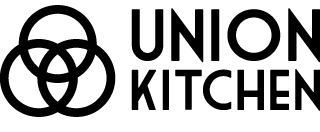Limiting Listeria: Keeping Your Consumers Safe from Illness
As wonderful as food is, the unfortunate truth is that, like everything else in life, it can often have unexpected consequences. For millennia, foodborne disease has been a dangerous risk, and the present is no different. If not properly handled, you could unintentionally spread foodborne illnesses to your consumers. Yikes!
In this Union Kitchen resource guide, we will examine one of the most dangerous forms of foodborne illnesses, listeria. We will explore what listeria is, how to test for it, and how to prevent its spread. This knowledge will be critical in keeping consumers healthy, safe, and maintaining their trust in your business.
What is Listeria
Before discussing prevention, we need to familiarize ourselves with listeria. According to the Center for Disease Control, listeria is a form of food poisoning that comes from ingesting the bacteria known as Listeria Monocytogenes.
This foodborne infection comes from improperly processed foods, usually meat. In the 1990s, there was an outbreak of listeria that was eventually traced back to everyone’s favorite mystery meat: hot dogs and eventually cold deli meats as well. Since then, there have been changes to food safety protocols that have resulted in fewer cases and much safer meat products.
Listeria Monocytogenes is especially pernicious as, unlike most other kinds of bacteria, it can flourish in oxygen free environments and can survive in temperatures as low as 32 degrees Fahrenheit. This results in the infection of an estimated 1,600 people and the deaths of around 260 people each year. While these numbers make it a rarer form of food pathogen, it’s also deadlier. While most healthy people are at low risk for serious infection, listeria is dangerous for the babies of pregnant women, new borns, the immune deficient, and people above the age of 65. The most common symptoms of listeria include fever and diarrhea. Definitely not something you want consumers associating with your food - or experiencing yourself!
What Causes Listeria
The listeria-causing bacteria is usually found in soil, water, and animal feces. Without proper food preparation, this disease gets passed along to humans when people consume the infected food. As previously mentioned, most outbreaks come from contaminated deli meats and unpasteurized dairy products. Raw vegetables that grew in contaminated fertilizer can also sometimes be the culprit. While this is all might seem scary, it is completely within your control as a food manufacturer to stop an outbreak.
How to Prevent an Outbreak
Illnesses like listeria highlight the importance of proper food preparation. Whenever you work with foods that might carry the listeria monocytogenes bacteria, make sure to take the proper precautions. First, ensure that everything is clean. This means thoroughly cleaning your hands, work area, food contact surfaces, and utensils before beginning any food manufacturing. Your next step will depend on the type of food you're working with. If you're working with raw vegetables, make sure to scrub them clean with a brush under warm water. Meanwhile, those working with dairy products, namely soft or Mexican-style cheeses, should make sure that they are only using products made with pasteurized milk. If it wasn’t, toss it. Finally, meats, eggs, and smoked seafood won’t be safe to consume until they are cooked thoroughly at high temperatures. Food thermometers are a particularly usual tool for this purpose.
How to Test for Listeria
Certification by USDA for meat products and most local health departments require a listeria program. A listeria program outlines the procedures on how a manufacturing facility intends to prevent an outbreak. This includes testing as a key prevention method. There are two ways in which you can do this: (1) Send to a Lab, or (2) Test yourself.
The first option is sending samples to a lab for testing. To do this, you’ll need to properly collect environmental samples from a processing area. To start, sterilize a gauze swab with alcohol, grip it using a forcep, and then swab around in a place in the processing area that is likely to contain listeria, i.e. drains and hard to clean spots. If you are testing in multiple locations, make sure to use a different swab for every location. Each swab should then be placed into a separate clearly marked bag, one for each swabbed location. You can then send these swabs to a lab and will usually hear back within a few days.
Secondly, testing is also something you can do on your own. Many private companies offer at-home kits that will provide rapid testing. This should provide you with the assurance you need that your products are safe. Just make sure to do diligent research on any company whose testing kits you are using. The AOAC and AFNOR are excellent resources to make sure your testing kit is legitimate. If you do find that there is some listeria, don’t panic. Usually, tossing out the infected food and performing a deep clean of the equipment should be enough to stop an outbreak.
In this guide, we discussed the nature of listeria and the risks that the bacteria poses. Additionally, we introduced how to test for and prevent an outbreak of the disease. With this knowledge, you now have no problem ensuring your consumers’ safety and establishing the trust necessary to succeed. For more resource guides like this, be sure to check out Union Kitchen’s Resource Guides.


Comments